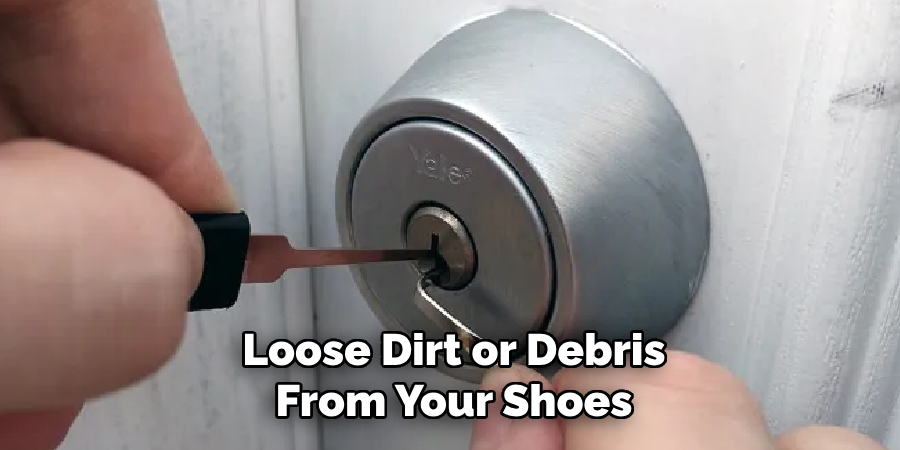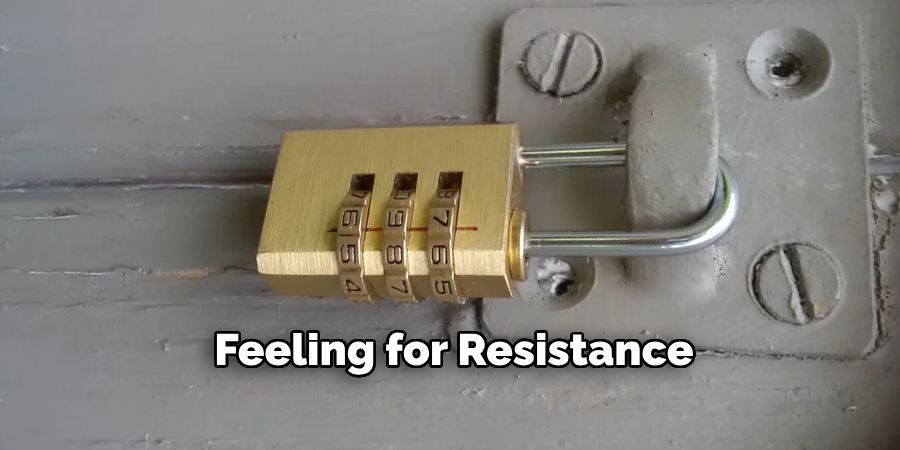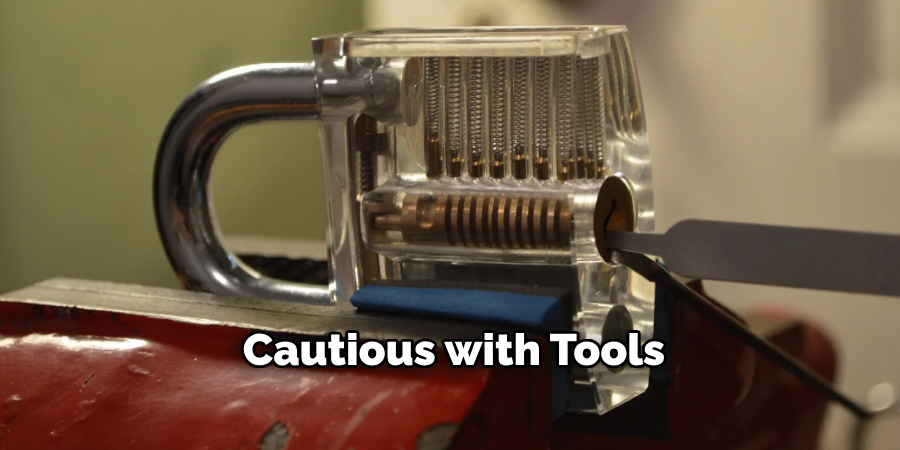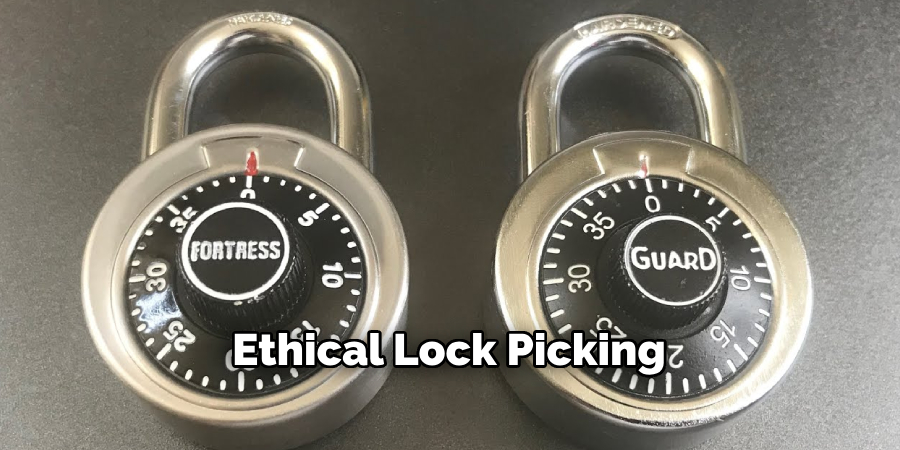Combination locks are widely recognized as a reliable security feature for protecting valuables in safes, lockers, and other secure spaces. These locks operate through a sequence of numbers or symbols that, when entered correctly, release the locking mechanism. Understanding how combination locks work can not only enhance your general knowledge but also assist in troubleshooting issues like forgotten combinations.

This guide aims to provide a detailed, step-by-step explanation on how to pick combination lock mechanisms for educational purposes only. It is vital to approach this information responsibly and within the confines of the law. Always respect the privacy and ownership of others. By the end of this article, you’ll clearly understand the process and the tools required for tackling such locks, empowering you to handle specific scenarios where unlocking a combination lock becomes necessary.
Understanding the Mechanics of a Combination Lock
How a Combination Lock Works
At its core, a combination lock relies on a precise internal mechanism composed of rotating wheels or disks. Each disk is associated with a unique number in the lock’s code. When the correct combination is entered, these wheels align at a specific position, creating a continuous pathway that allows the locking mechanism to open. The spindle runs through the center of the wheels, connecting them and facilitating their movement. When the correct alignment is not achieved, the locking mechanism remains engaged, effectively preventing unauthorized access.
The design of combination locks ensures reliability and security by incorporating carefully engineered components that work in harmony. The precise positioning of the wheels and the interaction with the mechanical or digital locking mechanism are critical to maintaining security. Whether mechanical or electronic, the principle of matching a specific code to unlock remains the same.
Types of Combination Locks
- 3-wheel combination locks: Often used for securing gym lockers or briefcases, these locks are smaller and focus on convenience.
- 4-wheel combination locks: Designed for higher security, they are commonly found on safes or heavy-duty lockers.
- Dial and digital combination locks: Dial locks feature a rotating dial for inputting the code, while digital variants use electronic keypads to enhance ease of use and functionality.
Tools Needed for Picking a Combination Lock
Basic Tools for Picking
- A tension wrench or shim: This tool is essential for applying pressure to the lock’s internal mechanism, allowing you to maintain the right amount of tension while manipulating the components.
- A pick tool: Used to manipulate the rotating wheels or internal mechanism of the lock, helping to determine the correct combination.
- Small flashlight: A flashlight is useful for inspecting the lock’s interior for signs of wear or marks that might hint at the correct combination.
Optional Tools for Easier Access
- Lubricant: Applying a lubricant can make it easier to manipulate the lock’s internal components by reducing friction. This smooth movement often helps detect even minor changes or clicks during picking.
- Magnifying glass: A magnifying glass is an optional but beneficial tool to closely examine the lock for any subtle indications, such as scratches or wear, that could reveal key components of the combination.
While these tools assist in understanding and picking combination locks, always ensure you have proper authorization and use them responsibly, respecting safety and security rules.
How to Pick Combination Lock: Finding the Combination by Feel
Step 1: Insert the Tension Wrench

Insert the tension wrench into the bottom of the lock’s keyhole, applying a small amount of pressure to feel the internal mechanism. Apply enough tension to engage the lock without forcing it. The gentle pressure ensures you don’t damage the lock while letting you sense subtle movements in the internal parts.
Step 2: Manipulate the Wheels
Start rotating the first wheel to find the “binding point”—this is the point where it feels tighter or resistant compared to other positions. Slowly rotate the wheel and pay close attention to the subtle changes in tension. Record the position where you feel resistance, as this is likely a correct point in the combination sequence.
Step 3: Repeating the Process
Continue manipulating the second and third wheels in the same way. Repeat the process for each wheel, using the same strategy of sensing the binding point and recording the resistant positions. Gradually, you’ll align the wheels to the correct combination sequence, allowing the lock to open. Patience and a delicate touch are essential to identify the correct settings effectively.
Using Sound and Feel to Identify the Right Combination
Step 1: Listening for Clicks or Stops
Listen carefully for subtle clicks as the lock turns. These clicks can indicate that a wheel has lined up with the correct position. The sound occurs as the internal mechanism aligns with the correct number, so paying close attention to these auditory cues can greatly assist in finding the right combination. Sometimes, the distinct sound of each wheel clicking into place helps to differentiate between correct and incorrect movements.
Step 2: Feeling for Resistance
If you cannot hear the clicks, rely on your sense of touch to identify the correct positions. Use your fingers to feel for a slight difference in resistance as you turn each wheel. There is often a delicate change in the pressure required to move the wheel, and this difference is a sign that the wheel may be aligning with the accurate number. Such tactile indications are beneficial in noisy environments or when the lock produces minimal sound.

Step 3: Fine-Tuning the Combination
Concentrate on these areas to refine your approach if you detect an auditory or tactile cue suggesting movement at specific points. Carefully adjust the wheels by incrementally moving them in these zones, one position at a time. This fine-tuning process will help you close in on the correct sequence. By systematically combining sound and feel, you can significantly increase your chances of successfully identifying the right combination and unlocking the mechanism.
Trial and Error Method for Unlocking
Step 1: Narrowing Down Possibilities
Based on your findings from the previous steps, start testing potential combinations by turning each wheel in small increments. Focus on the first wheel and methodically rotate through each possible digit until you identify the correct one. Repeat this process for the remaining wheels, progressively narrowing down the possibilities and ensuring that each digit is tested thoroughly.
Step 2: Testing the Combination
Once you have a potential combination, apply light pressure with the tension wrench and attempt to turn the dial. Pay close attention to feedback from the lock—any resistance or unusual movement can indicate the need for adjustments. If the lock remains secured, adjust your tension slightly and retry the sequence. Be consistent and deliberate with your actions to avoid oversights.
Step 3: Patience and Persistence
Picking a combination lock requires patience and a methodical mindset. The process may take time, but remaining calm and persistent is essential. If your initial attempts fail, continue experimenting with small changes in tension and wheel positions. Each attempt provides valuable insights, eventually leading you closer to the correct combination and success in unlocking the mechanism.
Preventing Lock Damage During Picking
When attempting to pick a combination lock, it is crucial to prevent damage to the lock’s internal components to ensure its continued functionality. Employing careful techniques and avoiding unnecessary force are key to successful, damage-free lock-picking.
Avoid Over-Tightening the Tension Wrench
Applying too much pressure with the tension wrench can cause undue stress on the lock’s internal mechanisms. This added pressure risks bending or misaligning the components, leaving the lock in a worse condition and more challenging to operate. Instead, use gentle and consistent pressure on the wrench to maintain control without overexerting force.
Be Cautious with Tools

Your choice and handling of tools play a significant role in preventing damage. Avoid using excessive force with your pick tool, as the lock’s pins or wheels are designed to be delicate and precise. Heavy-handed movements or improper tools can break or warp these components, potentially rendering the lock unusable.
Take Care Not to Force the Lock
If you struggle to open the lock despite your efforts, take a moment to reassess your technique instead of forcing it open. Forcing the lock can cause irreversible damage, defeating the purpose of picking it skillfully. A measured approach with patience and care is the safest way to avoid harm to the lock.
Legal and Ethical Considerations
Understanding the Law
Picking locks without permission is illegal in most jurisdictions and could result in criminal charges. Always ensure you have the right to access the lock before attempting to pick it. Laws surrounding lock picking vary between regions, so it is crucial to familiarize yourself with local regulations to avoid unintended legal consequences.
Ethical Lock Picking

Lockpicking should only be done in legitimate situations, such as with your own locks or with the owner’s explicit consent. Using these skills for unauthorized access is not only illegal but also unethical. Instead, use your expertise responsibly, and consider engaging in lock picking as a hobby in a controlled, legal environment like lock sport. Lock sport communities offer a constructive way to challenge your abilities and connect with others who share your interests while staying within ethical and legal boundaries.
Conclusion
Picking a combination lock requires a clear understanding of the lock’s mechanics, the right tools, and a feel for identifying the correct combination. It’s essential to approach the process patiently and methodically, taking necessary precautions to avoid damage or misuse. Remember, understanding “how to pick combination lock” techniques should always be done responsibly and within legal boundaries. Always practice on locks that you own or have explicit permission to manipulate. By respecting these principles, you can safely explore the skill while maintaining ethics and legality in your endeavors.
About
Safety Fic is a distinguished figure in the world of Diy design, with a decade of expertise creating innovative and sustainable Diy solutions. His professional focus lies in merging traditional craftsmanship with modern manufacturing techniques, fostering designs that are both practical and environmentally conscious. As the author of diy, Safety Fic delves into the art and science of Safety Fic-making, inspiring artisans and industry professionals alike.
Education RMIT University
(Melbourne, Australia) Associate Degree in Design (Safety Fic) Focus on sustainable design, industry-driven projects, and practical craftsmanship. Gained hands-on experience with traditional and digital manufacturing tools, such as CAD and CNC software.
Nottingham Trent University
(United Kingdom) Bachelor’s in diyfastly.com and Product Design (Honors) Specialized in product design with a focus on blending creativity with production techniques. Participated in industry projects, working with companies like John Lewis and Vitsoe to gain real-world insights.
Publications and Impact
In diy, Safety Fic his insights on indoor design processes, materials, and strategies for efficient production. His writing bridges the gap between artisan knowledge and modern industry needs, making it a must-read for both budding designers and seasoned professionals.
